Key in a search term below to search our website.
Key in a search term below to search our website.
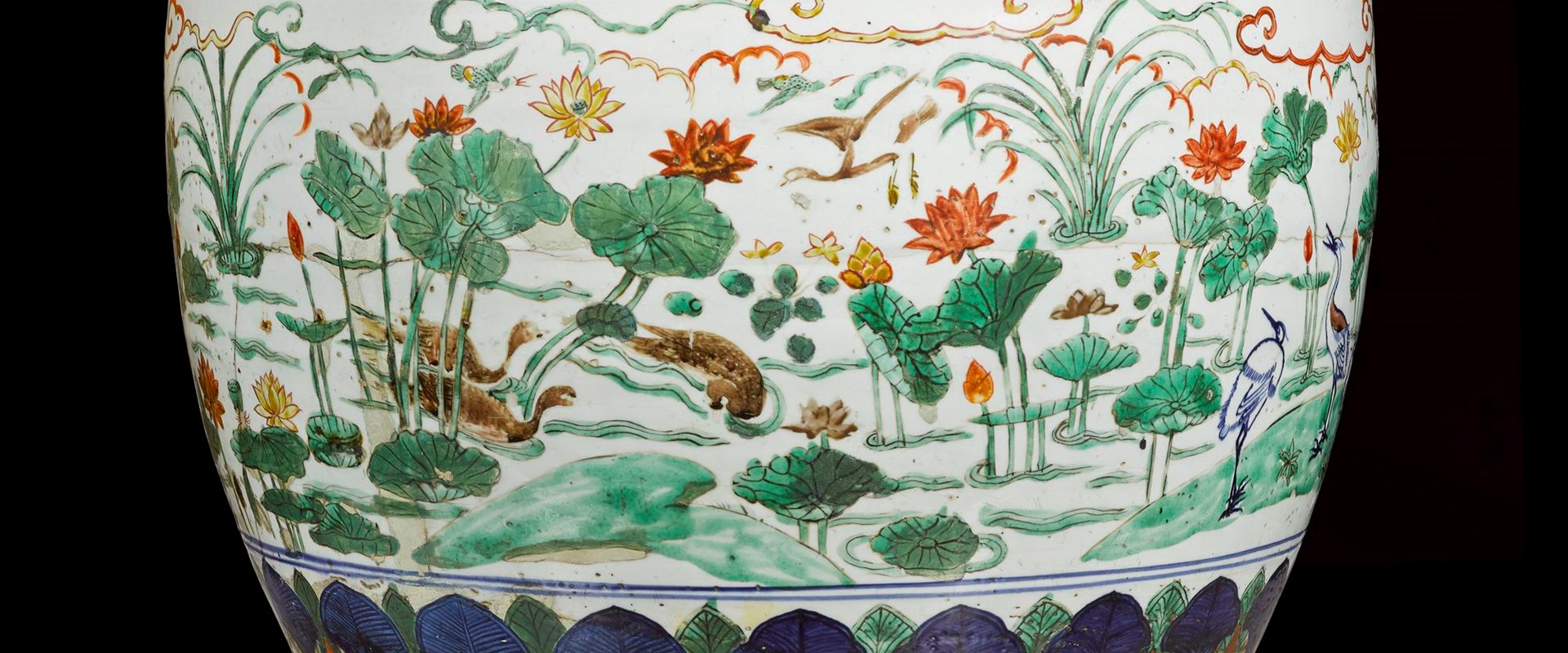
From ancient ceramics to imperial jade, oracle bones to contemporary propaganda posters, our Chinese collection spans over four thousand years and includes around 11,000 items.
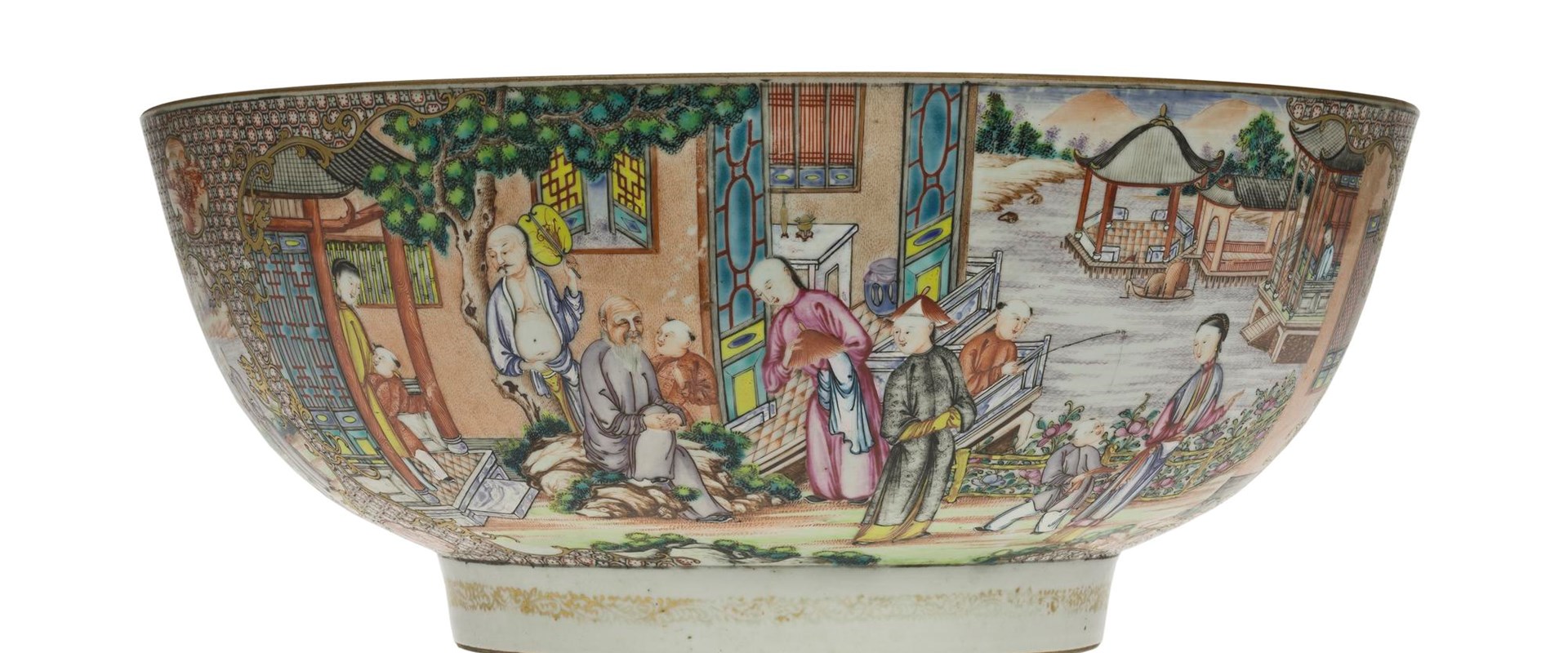
Porcelain punch bowl, painted in overglaze enamels with views of house interiors in Guangzhou (Canton) and figures in Chinese dress overlooking a river, export ware: China, Qing Dynasty, late 18th century AD.
The ceramic collection includes almost 2,000 items, from all periods and dynasties of Chinese history, ranging from Late Neolithic cultures such as Yangshao (ca. 5000–3000 BCE), through the Han (206 BCE–220) and Tang (618–907) dynasties, and continuing through the Song (960–1279), Yuan (1279–1368), Ming and Qing up until the 20th century, with material from the Cultural Revolution era (1966–1976).
The ceramics in the collection are representative of many different kilns across China; they are of different forms and types, from various periods of production with different glazes, styles and techniques. The single largest acquisition comprises pieces purchased from Lieutenant-Colonel Kenneth Dingwall (1869–1946) between 1919 and 1925.
There are also many fine examples of export wares intended for the European market amongst others, illustrating the skill of Chinese craftsmen in adapting to new markets and tastes. These include armorial porcelains intended for the European, including the Scottish, aristocracy, and bearing their heraldic devices. Twenty-first century ceramics from the Shanghai design studio Spin Ceramics have been acquired more recently. These pieces showcase the latest developments in studio ceramics in the People's Republic of China.
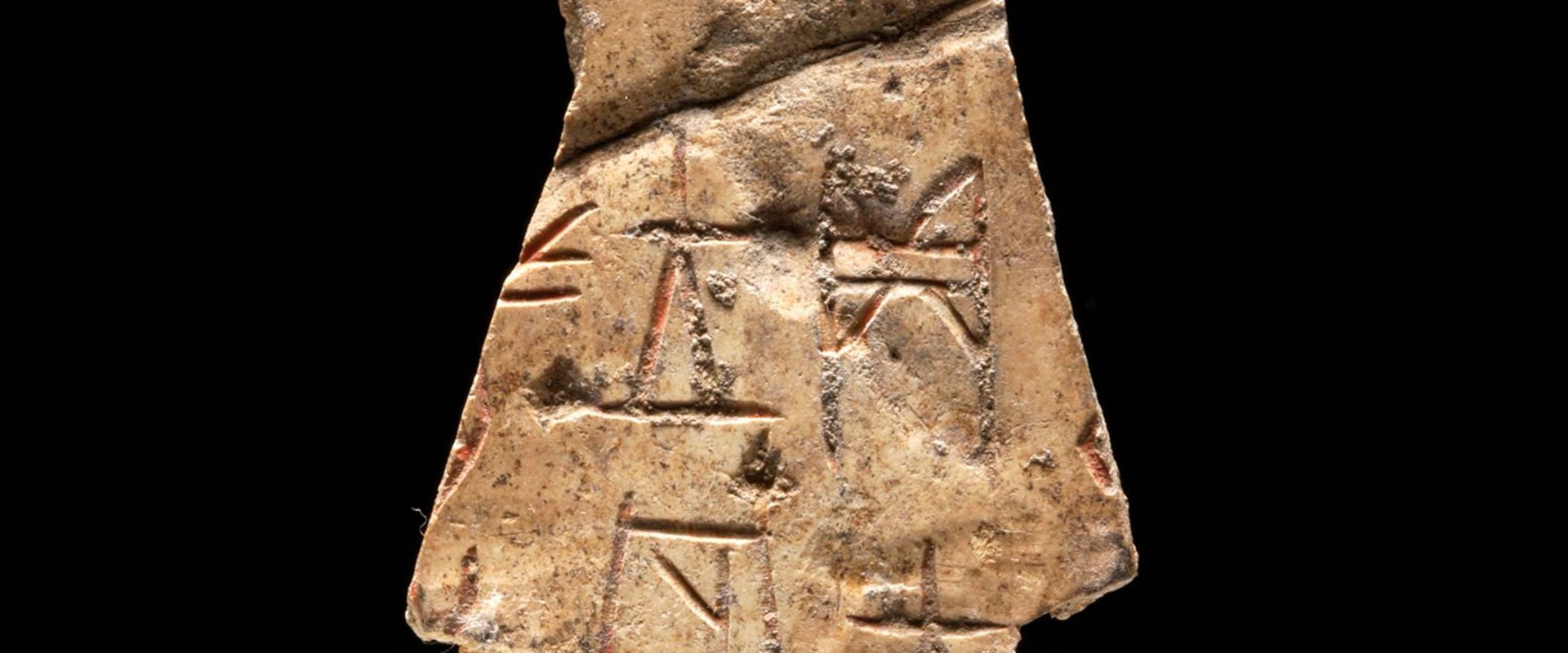
Oracle bone of tortoise plastron or ox scapula, with incised script recording divination: China, Henan Province, near Anyang, Yinxu, late Shang dynasty, c. 1200–1050 BC
Of great significance is the collection of inscribed oracle bones. Oracle bones, which are usually of turtle plastron or oxen scapula, were used for pyromantic divination by shamans of the late Shang dynasty (c.1600–1046 BCE). The divinatory queries as well as the responses by the spirits were inscribed on the bones in the earliest form of systematic Chinese writing known as oracle bone script.
Formed in China between 1903 and 1908 by two missionaries, Samuel Couling (1859–1922) and Frank Chalfant (1862–1914), the Couling-Chalfant oracle bone collection was assembled only a few years after the oracle bones were recognised for what they are. The 1,500-strong collection was purchased in 1909, making it one of the earliest such collections, and the second largest outside East Asia.
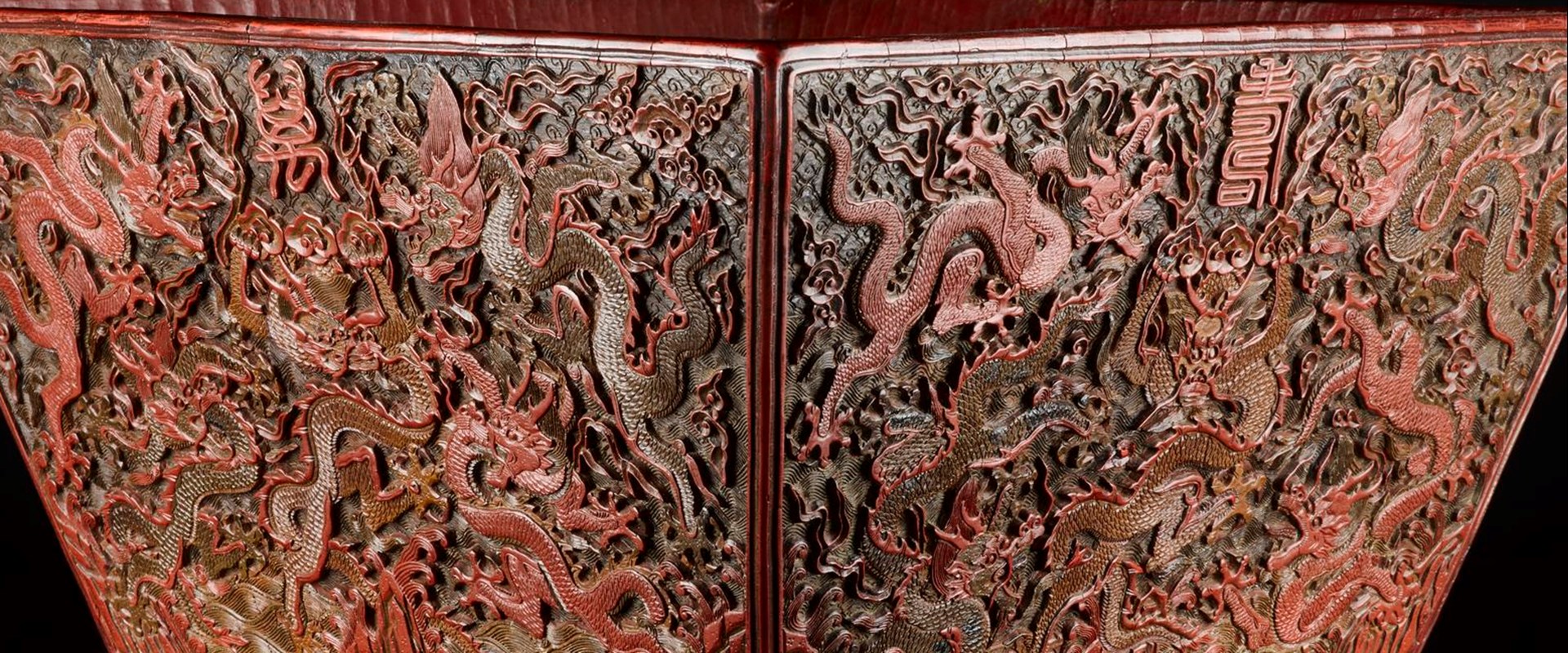
Rice measure of carved red, green and brown lacquer, square and decorated with five-clawed dragons in clouds above mountains and sea, with reign mark on base, and with wooden stand: China, Ming Dynasty, Jiajing reign, 1521–1567 AD.
There is an important range of Ming or Qing objects with imperial provenance or association. These are carved jades, ceramics, lacquer, as well as items of dress and accessories worn by civil and military officials featuring the emblems of court rank and status. Among the most notable items in this collection is a group of 65 single page of finely detailed illustrations painted on silk from the Illustrations of Imperial Ritual Paraphernalia (Huangchao liqi tushi) produced between 1760 and 1766.
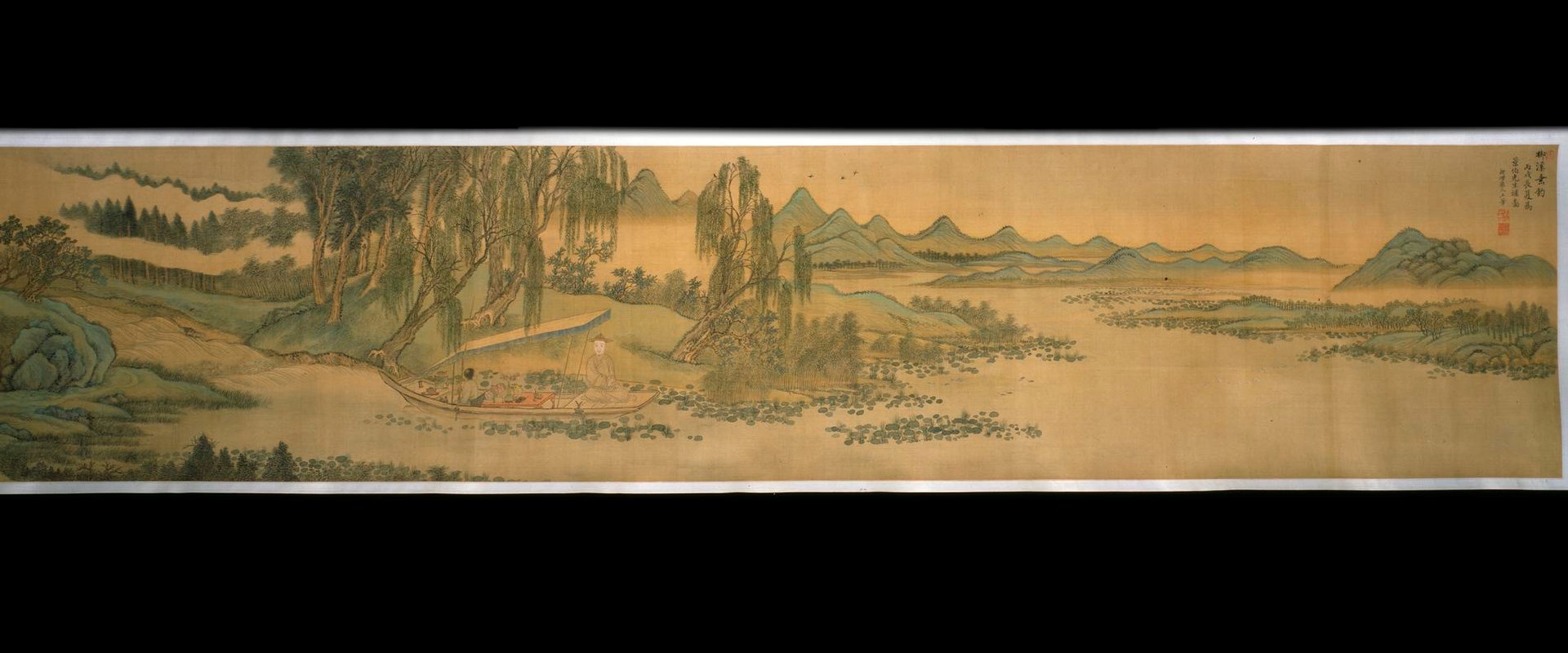
Handscroll painting, entitled Fishing in a Willow Brook (Liuxi chuidiao), in ink and colours on silk, on the theme of fishing in seclusion, with two colophons: China, attributed to Wang Hui, one colophon by Chen Zhiyan, Qing Dynasty, Kangxi reign, dated 1706.
Other paintings, prints, and rubbings in the collection include ink rubbings from the Han dynasty Wu Liang Family Shrine and from the Tang Nestorian Stele (781) which documents early Christianity in China.
Recent years have seen the acquisition of early modern paintings, including work by the monk-painter Xu Gu (1823–1896) and Jiang Jie (fl. 1800–32). Late Qing-period pieces include genre (everyday life subjects) paintings and religious subjects, and anonymous watercolour paintings produced in Guangdong for export to Europe.
In 2013, with the support of the Art Fund, the Museum acquired a large collection of propaganda posters from the 1960s to the 1970s, illustrating political themes prominent during China's heavily politicised Mao era.
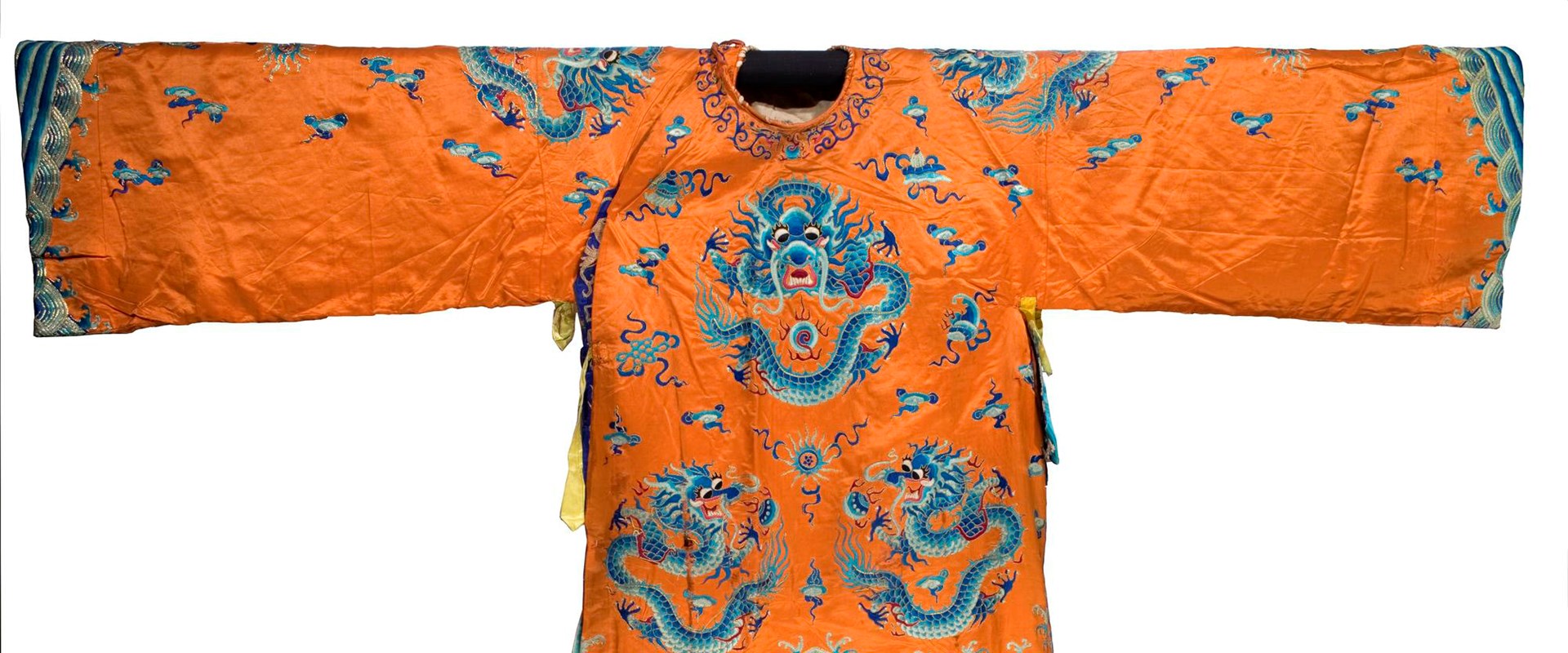
Theatrical robe, voluminous and ankle length with wrap over left front, in orange and turquoise silk embroidered with design of dragons pursuing flaming pearls: China, collected in Tibet, early 20th century.
This significant collection dates from the late Qing and the Republican era. Numbering nearly 1,000 items, it features a variety of accessories, headgear and footwear, official and informal dress, seasonal dress and theatrical costumes. This material shows China as an ethnically diverse culture, containing examples of Han dress and those of minorities such as the Manchu, Tibetan and Miao.
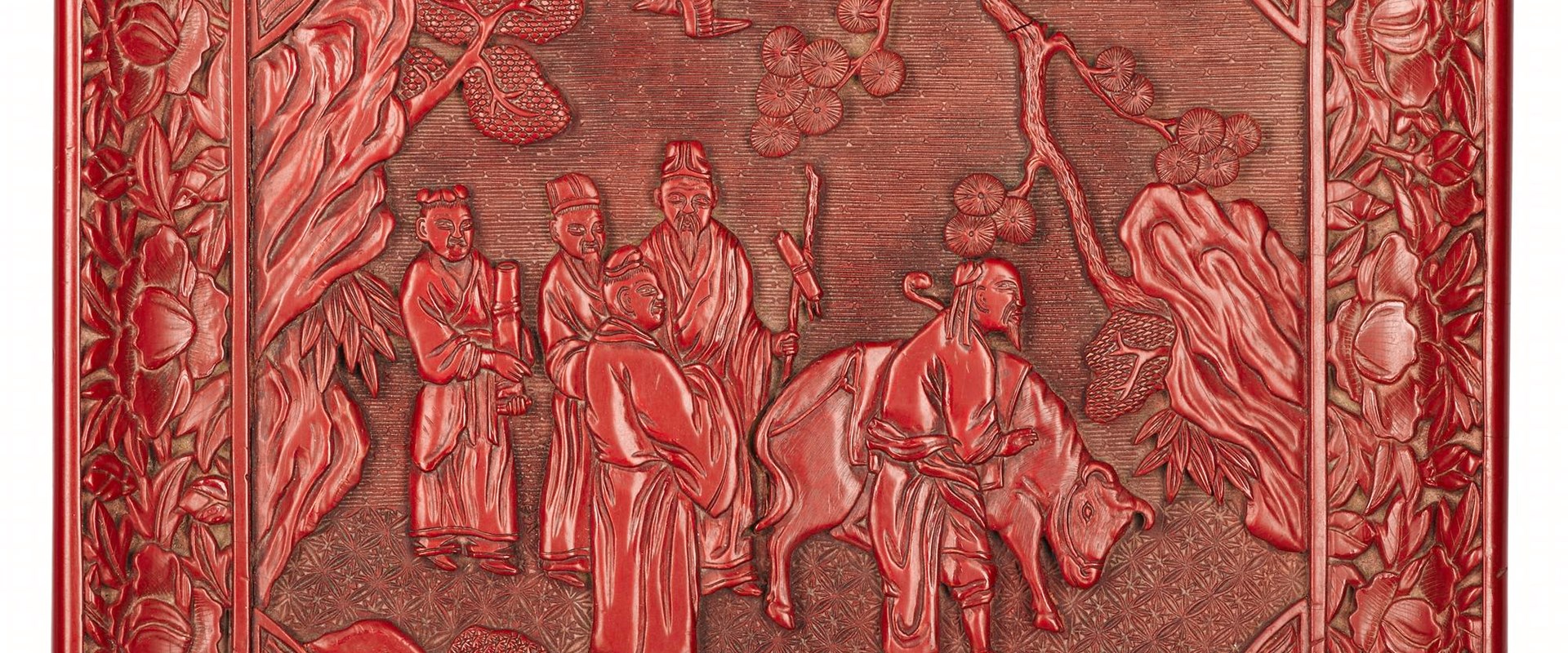
Square dish of red lacquered wood, carved with design of three men and an attendant carrying a bamboo container, an ox being led in front: China, 17th century.
The lacquer collection is notable and features many fine pieces spanning a number of historical periods, exemplifying the full range of Chinese lacquer techniques and materials. The collection ranges from small lacquer containers and vessels to large pieces of imperial lacquered furniture. Around 20 per cent of the items were part of the collection of the noted scholar of Chinese antiquities Sammy Yukuan Lee (1902–2011).

Wall panel of malleable iron (tiehua) with paper ground, one of four representing one of the 'Four Gentlemanly Virtues' (plum blossom, orchid, bamboo and chrysanthemum) and the four seasons: China, Qing Dynasty, 17th - 18th century AD.
The metalwork collection includes a small number of Shang to Han bronze vessels and weapons with some bear inscriptions. The collection also includes pieces of cloisonné and enamels, some of imperial provenance, and some produced in Guangzhou (formerly Canton) for the export market.
A small number of Buddhist gilt bronzes, of both Chinese and Sino-Tibetan figures of Song to Qing date, exemplify the skill of Chinese craftsmen in producing high quality, large scale gilded bronze figures. China's Buddhist and Daoist traditions are reflected through figurative images in both three and two dimensions of lacquered wood, bamboo, ivory, ceramics, cloisonné, stone, metal, and soapstone.
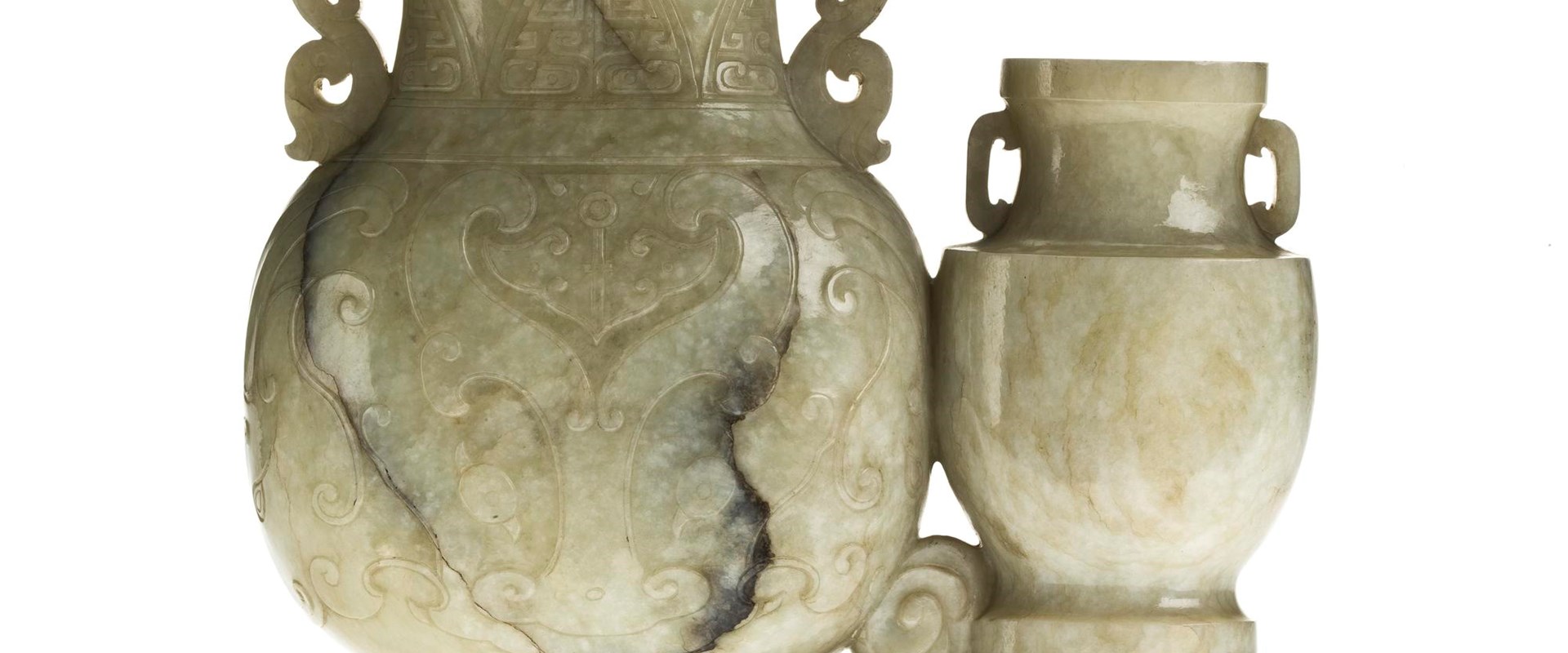
Double vase carved from a single piece of jade, the bases joined by branches of lingzhi, a taotie mask on the sides of the larger vase, and leaves round the neck: China, 18th century.
Jade has always been significant in Chinese culture, and the museum’s collection demonstrates this through a number of early jades. Later jades and hardstones include some imperially inscribed pieces, as well as figurative carvings, belt plaques, brush pots, table screens, plaques, and vessels.
Carvings in bamboo, wood, ivory and rhinoceros horn are found in the collection, demonstrating the skill of Chinese craftsmen in working across a diverse range of materials. These carvings were produced for and associated with China's literati elites of the Ming and Qing periods. Other arts of the scholar's studio include furniture, brush rests, brushes, table screens, and wrist rests, as well as a wide range of decorative objects that may have been collected, viewed, used, or studied by scholars. There is also a group of carved soapstones mainly for the export market.
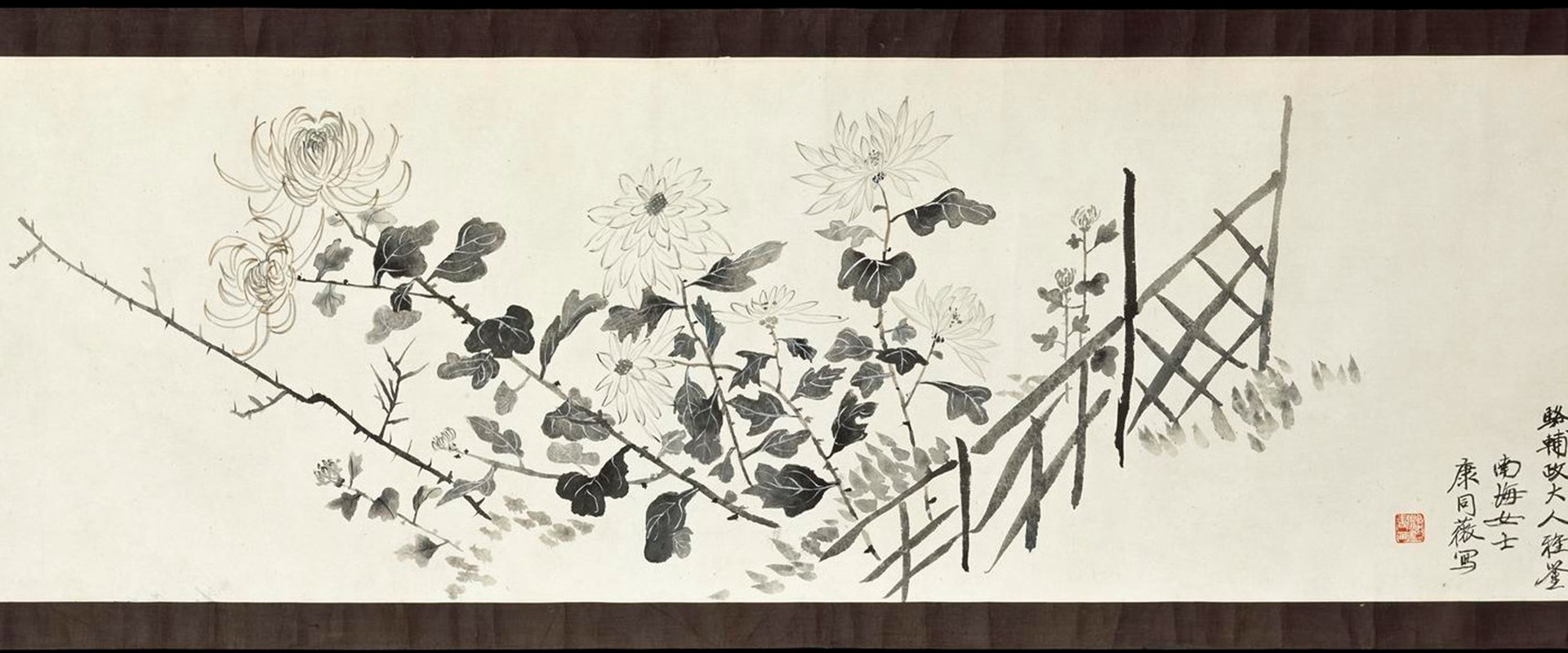
Hand scroll painting, depicting chrysanthemums, with inscriptions, seal and signature, ink and white pigment on paper: China, Guangdong province, Nanhai, by Kang Tongwei, c.1865. Collected by Sir James Stewart Lockhart. With permission of George Watson's College
The collection is supported by important loans, most notably from the Royal Collection Trust and George Watson's College. The latter has lent a large group of items relating to Sir James Haldane Stewart Lockhart (1858–1937), who served as a colonial official in Hong Kong. Widely respected, Lockhart rose to the rank of Registrar General and Colonial Secretary of Hong Kong (1895–1902) and then became Commissioner of Weihaiwei (1902–1921) in Shandong province. Lockhart spoke Chinese fluently, and had an affinity with Chinese culture and customs which makes his collection a unique and unparalleled Sino-Scottish collection. You can see items from the collection in our online database here.
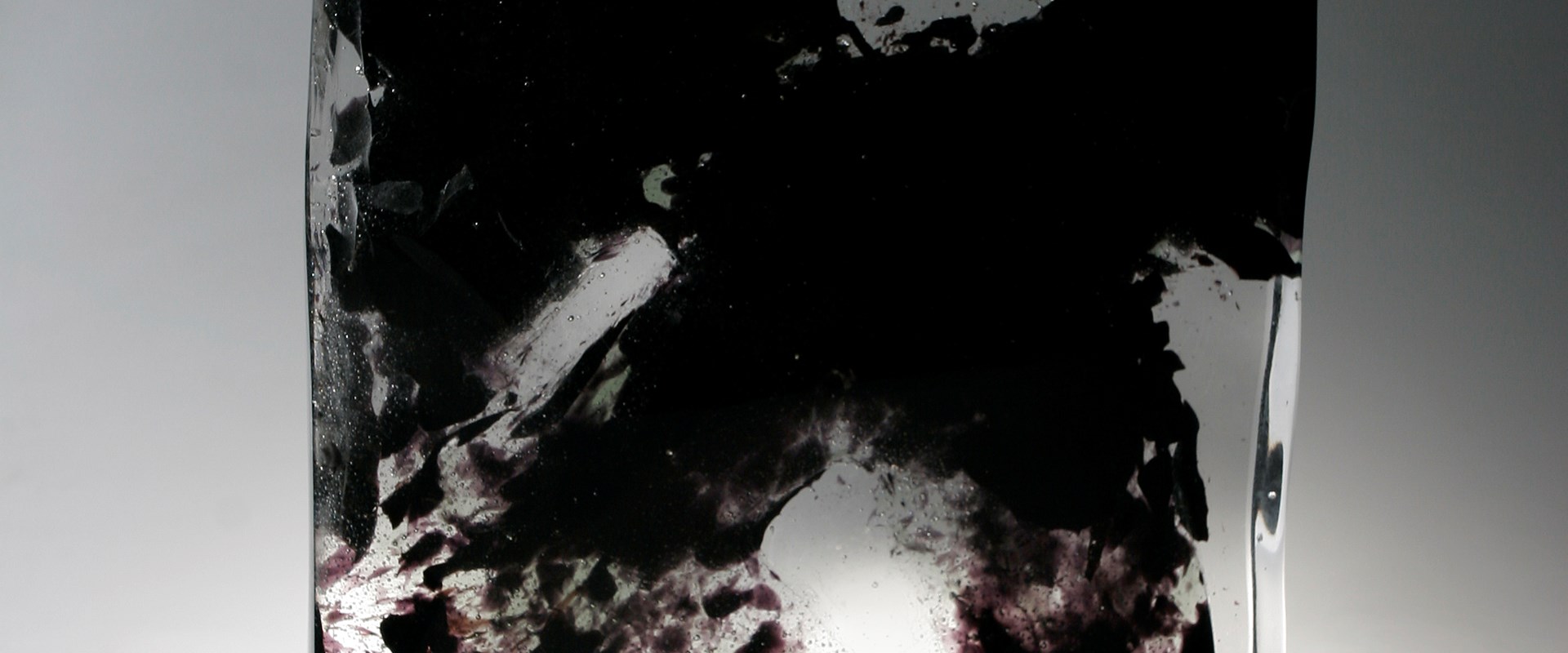
Glass sculpture entitled Calligraphy or Non Calligraphy VIII (Fei shu fei fei shu VIII): China, by Wang Qin, 2007.
We continue to add to our Chinese collection, with new acquisitions from contemporary artists.